The Alaskan klee kai remains a steadfast and adorable breed that loves its family, gets along well with other dogs, and can even make a great playmate for young children if trained well.
Whether you’ve recently adopted an Alaskan klee kai or are researching if the breed is right for your lifestyle, the information below may help navigate the growth, milestones, and more of raising an Alaskan klee kai.
Alaskan Klee Kai Summary
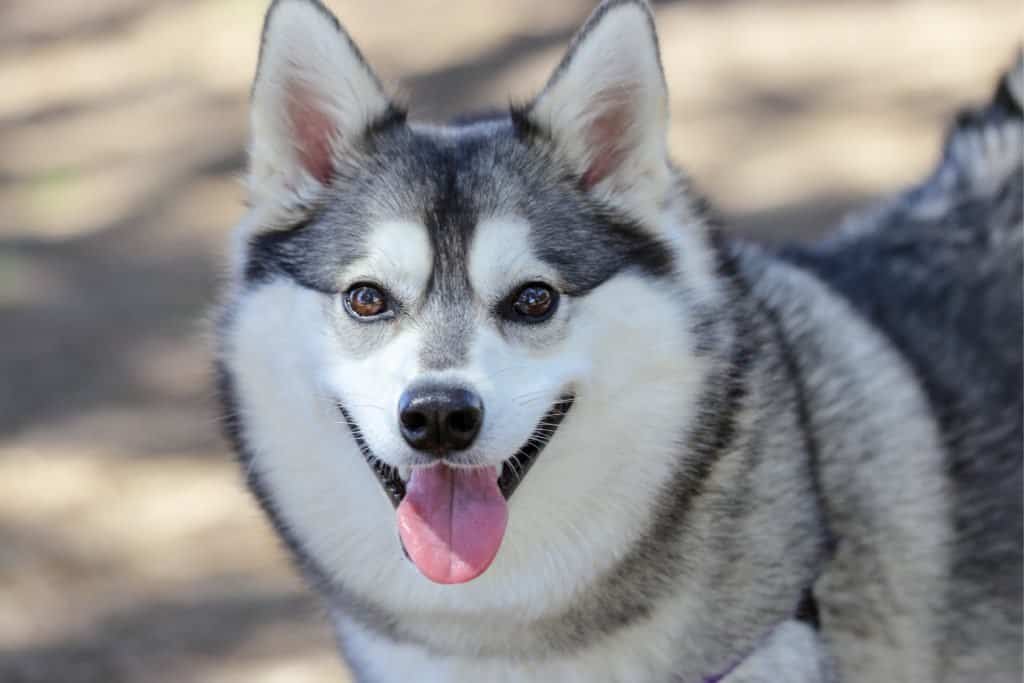
Alaskan klee kais are a designer breed with Siberian husky, malamute, and schipperke ancestry, among other breeds.
©bon9/Shutterstock.com
First bred in the 1970s and 1980s in Alaska, the Alaskan klee kai finds its roots in a dog-passionate family looking for a smaller companion dog than the Alaskan husky. Bred by Linda Spurlin and her family, the klee kai became available to adopters by 1988 — and got the official name Alaskan klee kai in 1995.
The American Kennel Club and the United Kennel Club don’t recognize the Alaskan husky as an official breed — but it’s a popular dog throughout Alaskan and the United States nonetheless.
Alaskan klee kai dogs look very similar to their northern spitz-style ancestors. Coloring includes black and white, gray and white, or red and white markings. Bred to be companions, Alaskan klee kais love to spend time with their families, are alert guardians against unfamiliar people, and become curious adventurers when on walks or in public.
Alaskan Klee Kai Growth and Weight Chart by Age
Breeders across the world breed Alaskan klee kai dogs in three sizes: toy, miniature, and standard. The growth and weight chart below is for a standard Alaskan klee kai and is estimated in the middle of the range. As with all colors, markings, behavior, height, and weight, it will depend on the individual dog’s training, breeding, and nutrition.
| Age | Male Weight (in pounds) | Female Weight (in pounds) |
|---|---|---|
| Birth | 2.5 | 2 |
| 1 Month | 3.9 | 3.3 |
| 6 Weeks | 4.2 | 3.9 |
| 2 Months | 4.9 | 4.2 |
| 3 Months | 6.3 | 5.3 |
| 4 Months | 8 | 6.5 |
| 5 Months | 9.5 | 7.7 |
| 6 Months | 11 | 8.9 |
| 7 Months | 12.3 | 10 |
| 8 Months | 13.5 | 11 |
| 9 Months | 14.5 | 11.8 |
| 10 Months | 15.3 | 12.5 |
| 11 Months | 15.9 | 13 |
| 12 Months | 15.9 | 13.6 |
| 2 Years | 16 | 14 |
When Will My Alaskan Klee Kai Stop Growing?

White-colored Alaskan klee kai are rare colorings, as many have dual-colored coats.
©Caro M/Shutterstock.com
On average, Alaskan klee kai puppies will stop growing around 18 months.
According to Dr. Mollie Newton, “Alaskan Klee Kai puppies undergo rapid growth, reaching adulthood by 18 months.” The major milestones in an Alaskan klee kai’s puppyhood include the transition to solid food around eight weeks old and teething between three and four months of age.
Kita’s Klee Kai, a reputable breeder of Alaskan klee kais that provides exceptional resources and education for the first-time klee kai owner, recommends feeding young puppies two to three times a day. These puppies (which are past the eight-week mark, when you’ll get to bring yours home), eat either ⅓ or ½ of a cup of food at each meal. Like other puppies, Alaskan klee kai dogs need access to cool, clean freshwater all the time. The only time you may want to restrict water intake is before bed during your pup’s potty training phase.
If you’re unsure of how much food to provide your Alaskan klee kai puppy, or you want to switch their food and don’t know which to choose, consult your vet. They’ll be able to counsel you on the type and amount of food you give your new dog, as well as provide checkups to make sure your klee kai hits all its growth milestones.
How Big Will My Alaskan Klee Kai Be When It’s Fully Grown?
Depending on the size klee kai you’ve brought home, fully-grown klee kai sizes will differ. Male Alaskan klee kai dogs usually weigh one or two pounds more than their female counterparts, but they don’t always outweigh them.
- Standard klee kai dogs will stand between 15 and 17 inches high for both genders and weigh between 17 and 22 pounds. Kita’s Klee Kai provided an average of 19.5 pounds based on their personal research.
- Miniature klee kai dogs will stand between 13 and 15 inches high whether they’re male or female. This size will weigh between 13 and 18 pounds at full maturity. Kita’s average for their miniature klee kai research was 16.5 pounds.
- Toy klee kai dogs will stand up to 13 inches high for both genders. The smallest of the klee kais, these dogs usually weigh around 12.6 pounds at full maturity.
While the American Kennel Club doesn’t recognize the klee kai as a registered breed, the United Kennel Club does — and its breed standards for the klee kai have changed a few times in the last 50 years. If a klee kai grows to over 17 inches in height, it’s considered a serious fault. If the klee kai is over 17.5 inches in height, it’s an eliminating fault based on the breed standards. For the most part, the standard variety Alaskan klee kai won’t be much taller than 16.5 inches.
Because the Club bases so much on height, the weight classification is moot — there’s not even a breed standard for how much a klee kai can or should weigh.
When Should My Alaskan Klee Kai Be Spayed or Neutered?
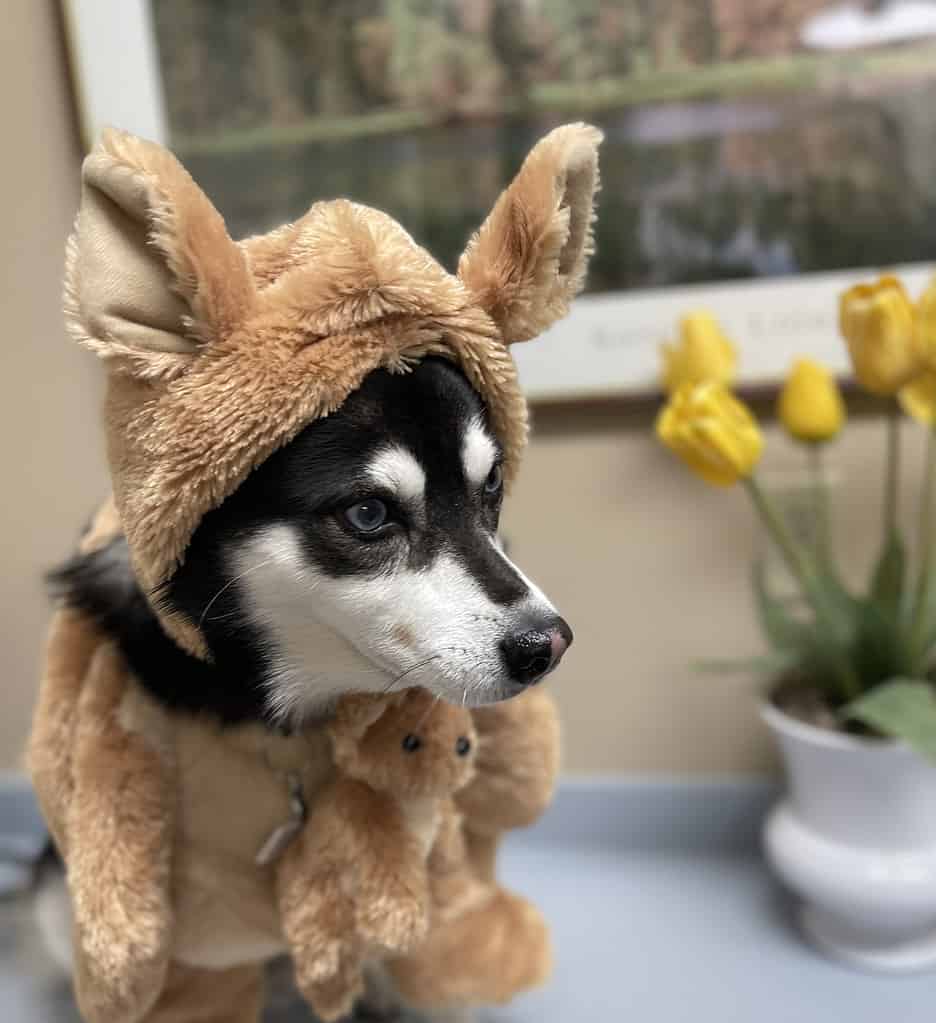
Most Alaskan klee kai dogs get spayed or neutered between the ages of six months and one year old.
©Luanne Burwell/iStock via Getty Images
In the last few years, veterinarians have recommended pet parents wait until six, eight, nine, or twelve months to fix their pups. Small and medium-sized dogs like the Alaskan klee kai are on the earlier side of the spectrum — between five and six months, according to Dr. Ghanasyam Bey, DVM. Spaying can prevent or lower the risk of some cancers in both male and female klee kai dogs.
If you’d like to spay your female klee kai before her first heat cycle, look to book a spaying appointment between her fifth and seventh month of life. You may need to take her in the week before to do some bloodwork, as well. On the other hand, you can neuter males anywhere after six months old.
When it comes to spaying and neutering your Alaskan klee kai, they simply need to be over the lowest age threshold of five to six months and in good health. Always talk to your veterinarian to determine what’s best for your individual pup’s health.
When Should My Alaskan Klee Kai Be House Broken?

As soon as you get your Alaskan klee kai home at eight or nine weeks old, they’re ready to be potty trained. And thanks to the Alaskan klee kai’s intelligence, potty training doesn’t have to be a massive chore.
Using some common sense, potty training your klee kai can happen in a matter of weeks. They include:
- Don’t encourage peeing on pads inside. It will send mixed signals.
- Keep your klee kai on a leash when you take them out to potty, even if you have a fenced yard. They get distracted easily and may forget to potty when they go outside.
- Avoid scolding when accidents happen inside. Also, use the right products to neutralize the ammonia in the urine so they don’t make it their “inside” pee spot.
- Use a command word when they do start to pee so your klee kai can associate the action with the command.
If you’re struggling to fully potty train your klee kai, share your dog’s behavior and consult your veterinarian on the best next steps. Remember that the best way to housebreak your Alaskan klee kai is patience and consistent training.
When Should My Alaskan Klee Kai Stop Eating Puppy Food?
Usually, the puppy food you choose to feed your Alaskan klee kai will indicate when to transition to adult food. For the most popular brands, the transition period is anywhere between nine and 12 months, especially for smaller breeds.
Whether you’re switching from puppy food to adult food, or between different brands or flavors of food, do so slowly. This enables your dog to handle the change well and avoid any potential gastrointestinal issues that may arise with the switch.
When Will My Alaskan Klee Kai Start Losing Teeth?
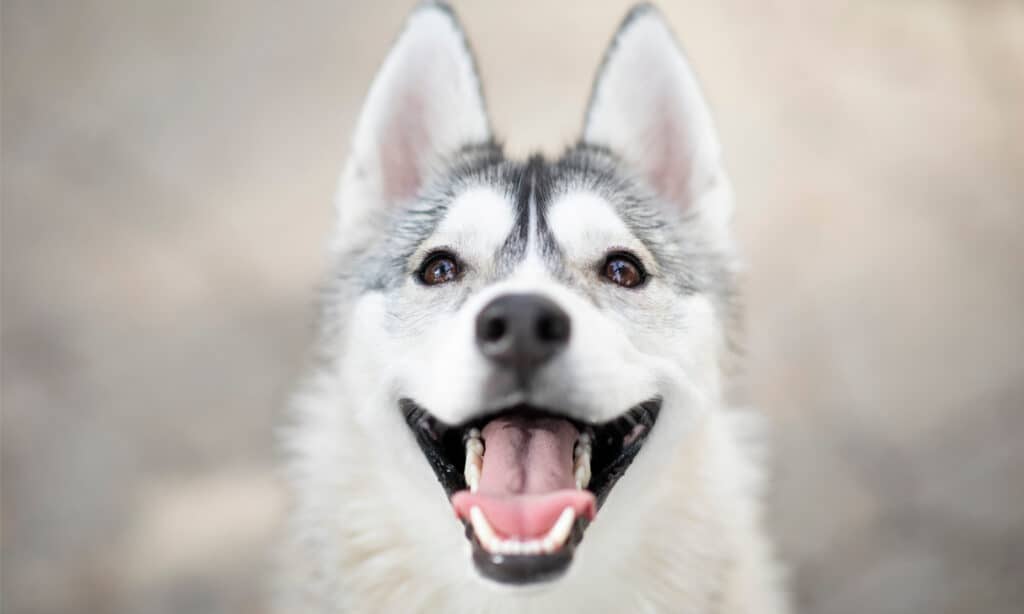
Klee kai dogs may have dental issues if their baby teeth don’t fall out by the six to nine month mark.
©iStock.com/KM Photography
Chances are, your Alaskan klee kai will begin to lose its teeth between three and four months old.
Alaskan klee kais are a breed that has the proclivity to retain baby teeth even after adult teeth have tried to come in. These teeth are called persistent deciduous puppy teeth and can cause a litany of oral issues. If your klee kai still has puppy teeth when they go to get spayed or neutered, the vet will most likely ask if you’d like them to take that tooth out as well. Because your pup is under anesthesia already, it’s an opportune time to “kill two birds with one stone.”
When your Alaskan klee kai begins to lose teeth, don’t be scared if you see a little blood. Or, if you see a missing tooth in their mouth but no tooth to be found. Like other breeds, klee kai dogs can (and will) swallow baby teeth when they eat, drink, or lick themselves. Play also provides a way for puppies to lose their teeth.
When Should I Start Training My Alaskan Klee Kai?
Like other intelligent, active dog breeds, the Alaskan klee kai needs training and socialization early in their puppyhood. While you can wait until vaccines take effect for your klee kai to be around animals outside of the others in your home, training should start almost immediately when you get them home.
“Begin training early with gentle consistency. They respond best to positive reinforcement techniques. Due to their sharp minds, keeping them mentally stimulated is as crucial as physical activity. Puzzle toys and obedience tasks can work wonders,” said Dr. Mollie Newton, an experienced veterinarian and proud owner of PetMeTwice.com.
What you train first will depend on your lifestyle and time commitment. Some of the first lessons experts suggest focusing on include your klee kai dog’s name, establishing eye contact, potty training, recall, and socialization/barking at strange things.
“This breed has a strong prey drive; thus, training them on a strong recall is essential. Be mindful, the klee kai can be vocal; early training can mitigate excessive barking,” she cautioned. “Understanding and catering to these hallmark behaviors ensures a harmonious relationship with your furry friend.”
What Commands Should I Teach My Alaskan Klee Kai First?
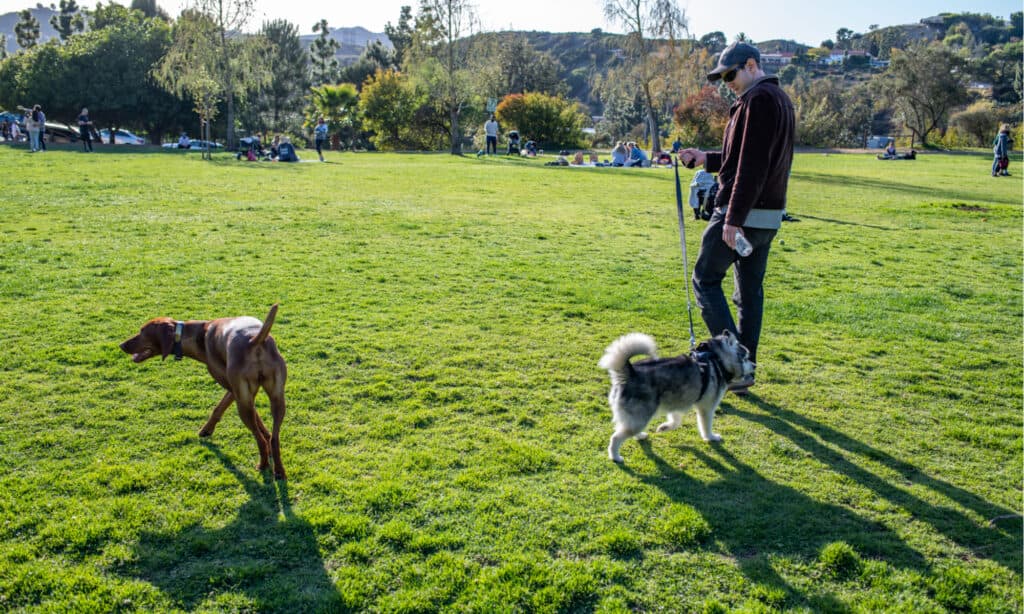
Their name, sit, stay, and recall are among the first commands to teach your klee kai.
©Michael Gordon/Shutterstock.com
According to research and experience from the breeders at Kika’s Klee Kai, the very first thing you want to teach your Alaskan klee kai is their name. Building recognition around their name ensures your klee kai has a place in the world — they know when you’re talking to them, what to respond to first, and who to listen to (you) if there’s a dangerous or unfamiliar situation.
After learning their name, your Alaskan klee kai puppy is ready to learn other basic commands. The most important to solidify early in their life include:
- Sit. This command is proper manners and the basis for other, more complex commands.
- Stay. Stay enables you to turn your back without your pup getting into trouble. It also can keep them safe.
- Come. Recall is vital for potentially dangerous situations and general life.
Once you’ve built the foundation, you and your klee kai puppy can move on to more nuanced tricks or training lessons. Some commands like “drop it,” “leave it,” or “down” will enable your pup to move through the world more easily while tricks like “play dead” or “kisses” are fun to learn and keep their mind challenged.
Lastly, you’ll want to work on leash training with your Alaskan klee kai. Dr. Sabrina Kong of We Love Doodles remarked that “[Alaskan klee kais are] known to be escape artists, so a secure yard and leash training are musts. Their Husky heritage means they have a strong prey drive, so being cautious around smaller animals is essential.”
When leash training, focus on your klee kai listening to you rather than external stimuli, staying by your side and not pulling, and understanding the “heel” command.
Common Health Issues Your Alaskan Klee Kai Might Experience
While generally healthy, the Alaskan klee kai has a few potential health problems as it ages. Breeders will test litters for a series of health conditions, including:
- Patellar luxation (kneecap dislocation).
- Autoimmune thyroiditis (which affects a dog’s thyroid production).
- Factor VII deficiency (which will affect a dog’s ability to coagulate blood and recover from small trauma wounds).
Some Alaskan klee kai pups have the proclivity to suffer from liver disease, eye bulge, albinism, heart defects, and cataracts. Breeders do their best to test for the most common diseases in puppyhood, but some dogs will develop illnesses or diseases later in life. Providing healthy food, energizing exercise, and mental stimuli will keep your klee kai pretty healthy outside of vet visits.
Individual klee kai dogs will differ based on ancestry, lifestyle, and a multitude of other factors. Regular vet checkups will ensure your Alaskan klee kai stays healthy — and can prevent or treat any health issue that presents itself at the time of the vet appointment.
Pictures of Alaskan Klee Kai as Puppies
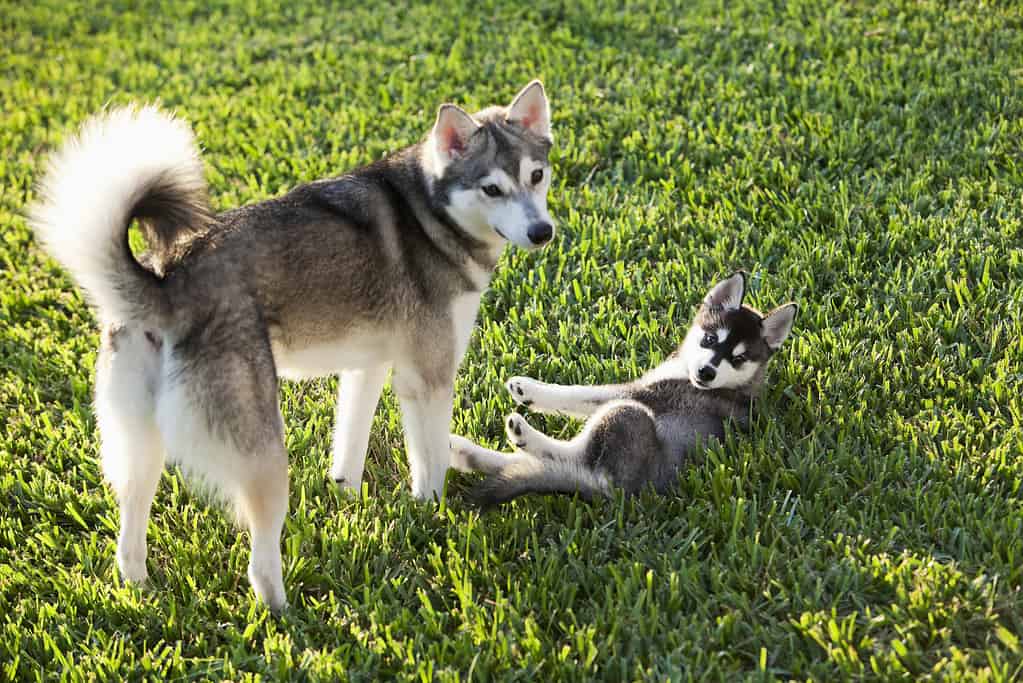
Three-month-old Alaskan klee kai dogs will weigh less than 10 pounds.
©kali9/iStock via Getty Images

Some breeders joke that Alaskan klee kai dogs are “husky lite” dogs.
©iStock.com/kali9
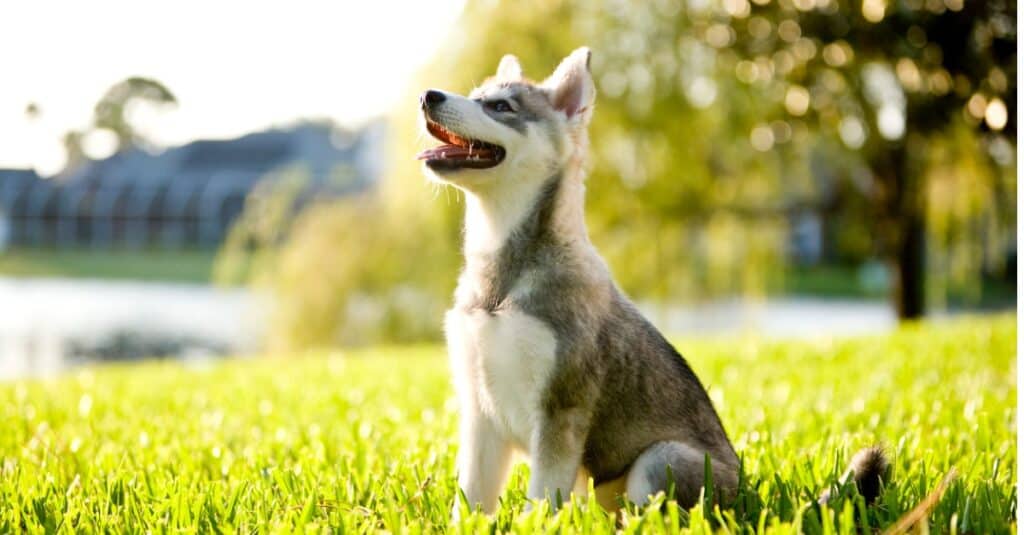
Alaskan klee kais are very active and need lots of daily exercise as puppies.
©Golden Pixels LLC/Shutterstock.com
Pictures of Alaskan Klee Kai at 6 Months
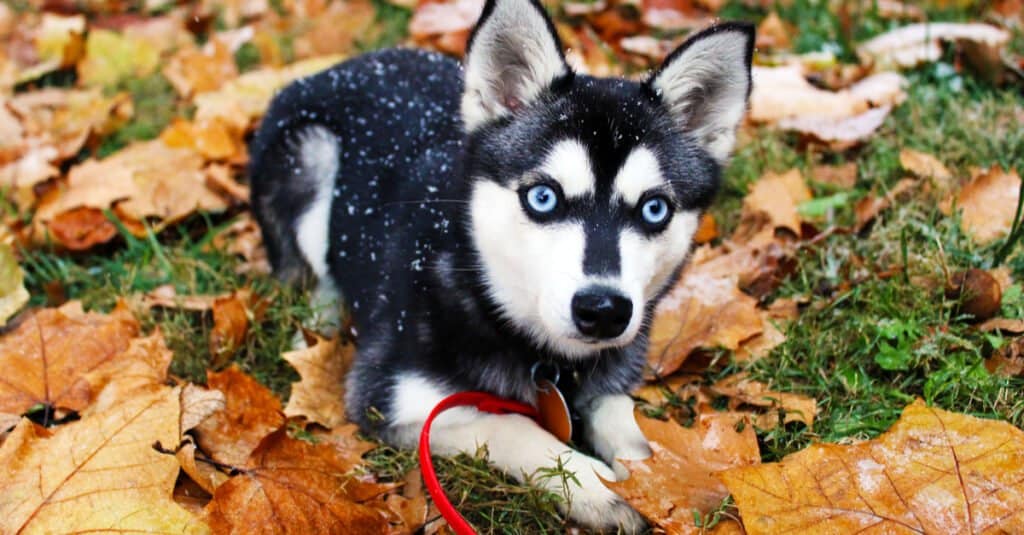
Alaskan klee kais can weigh, on average, between 10 and 20 pounds.
©Momick/Shutterstock.com

Leash training ensures your klee kai will understand recall and how to walk in public.
©I_AM_JASON/iStock via Getty Images
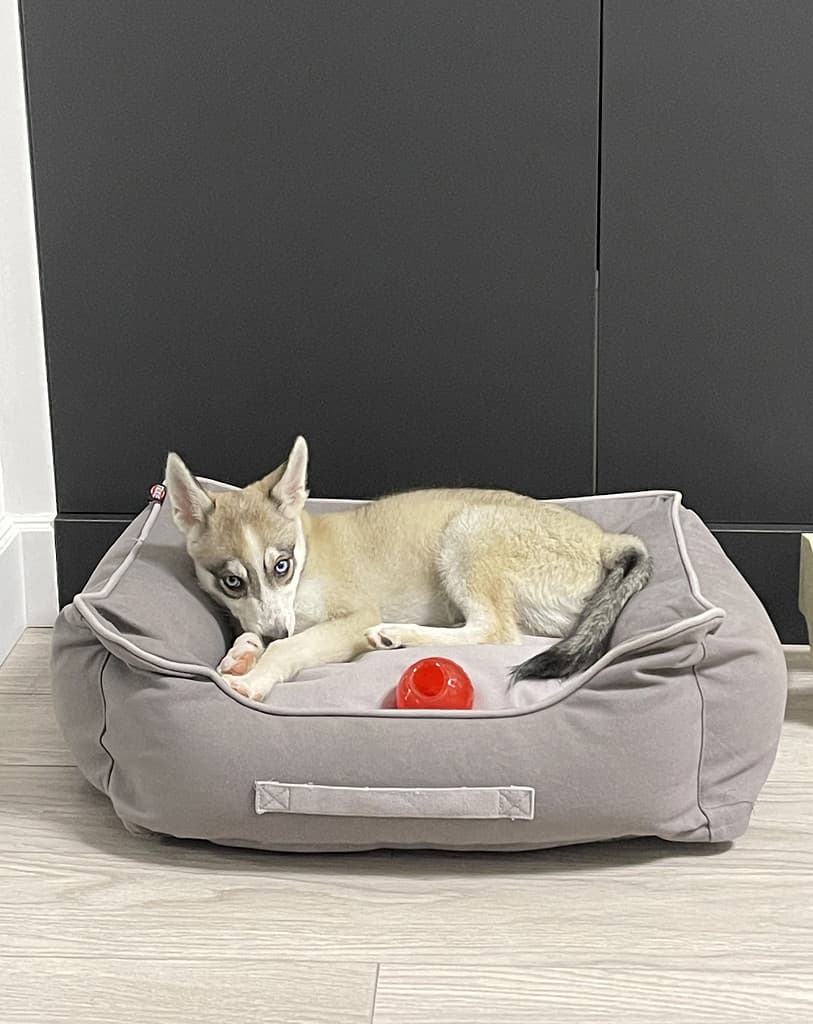
The Alaskan klee kai gets its blue eyes from the husky lineage.
©Nadzeya Haroshka/iStock via Getty Images
Pictures of Fully Grown Alaskan Klee Kai
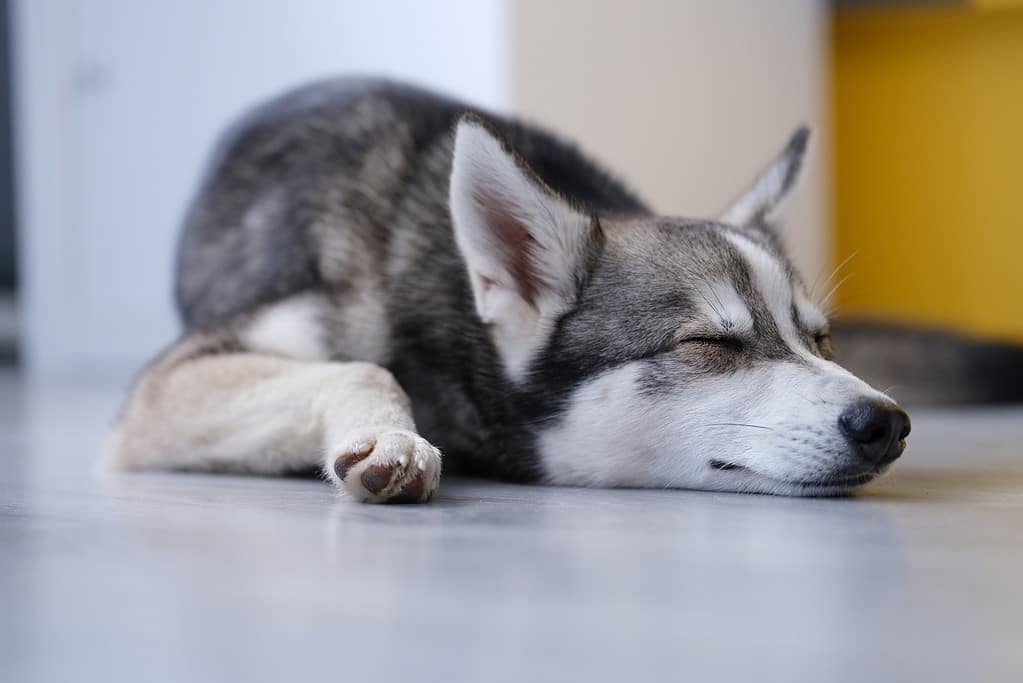
Alaska klee kai dogs need naps as they get older to support their curious and active nature.
©Ivan-balvan/iStock via Getty Images
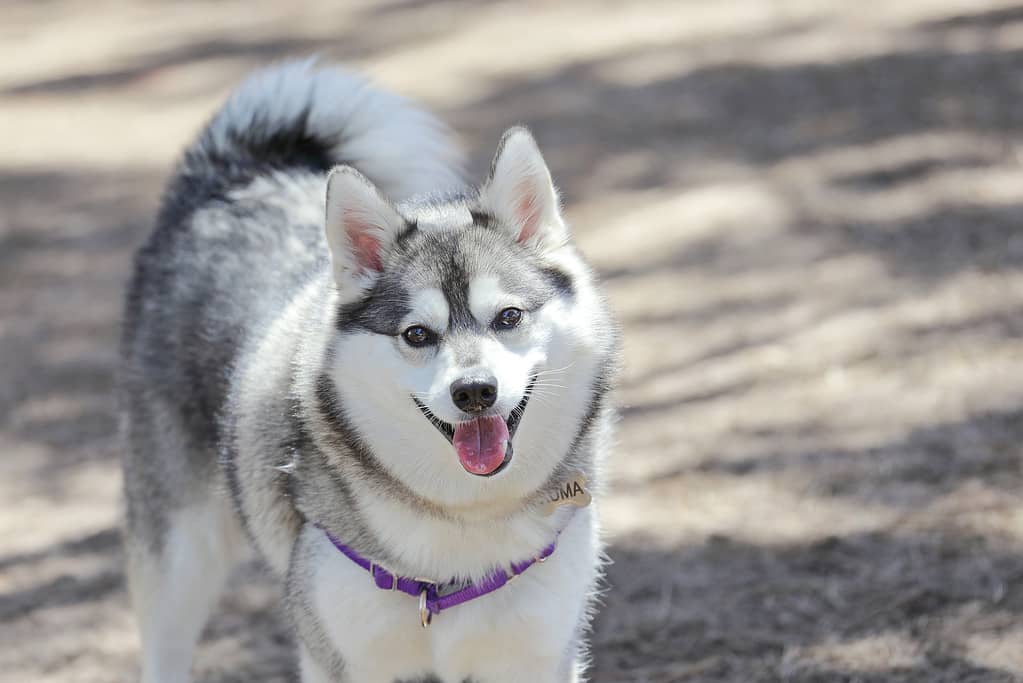
Well-socialized Alaskan klee kai dogs happily play with other pups.
©bon9/iStock via Getty Images
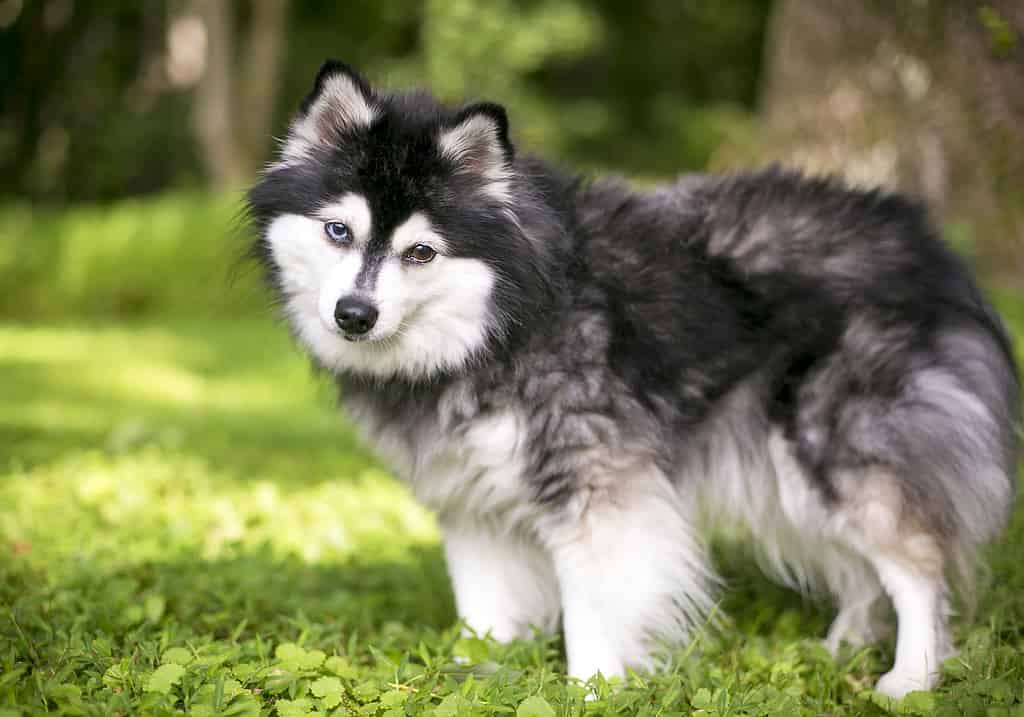
Alaskan klee kai dogs can have heterochromia — usually with one blue eye and one brown eye.
©Mary Swift/iStock via Getty Images
Other Dog Breeds Similar to Alaskan Klee Kai
- Siberian husky, which was the second breed Linda Spurlin used to create the klee kai.
- American Eskimo dog, which Spurlin used to refine her klee kai’s size and intelligence.
- The schipperke, which Spurlin relied on to refine the klee kai’s size and active personality.
The photo featured at the top of this post is © Golden Pixels LLC/Shutterstock.com
Ready to discover the top 10 cutest dog breeds in the entire world?
How about the fastest dogs, the largest dogs and those that are -- quite frankly -- just the kindest dogs on the planet? Each day, AZ Animals sends out lists just like this to our thousands of email subscribers. And the best part? It's FREE. Join today by entering your email below.
Thank you for reading! Have some feedback for us? Contact the AZ Animals editorial team.






